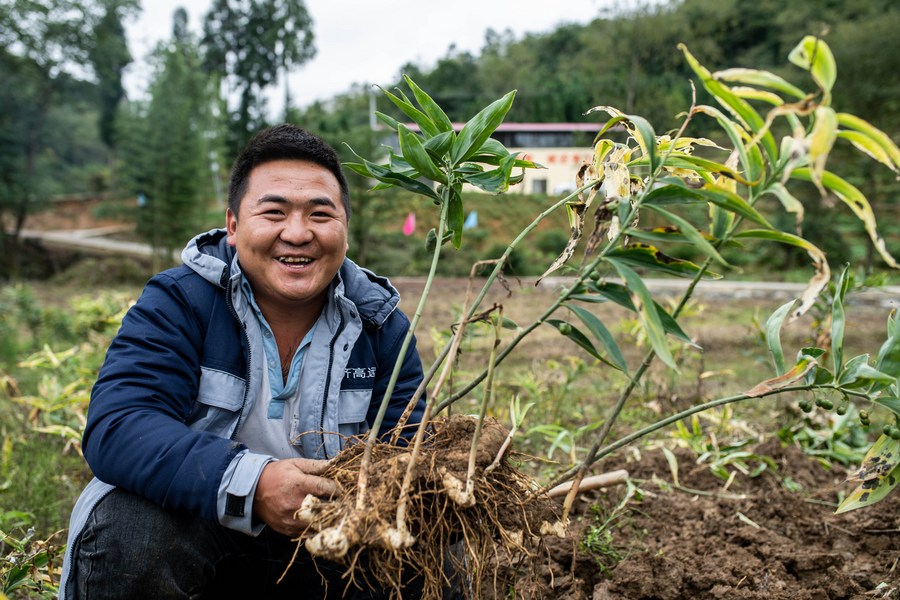
From laboratories to farmland, Yang Shaobing has helped those in remote areas in southwest China find a new cash cow by planting traditional Chinese medicinal herbs.

Yang, a 37-year-old researcher with the Yunnan Provincial Academy of Agricultural Sciences, arrived in the Dulongjiang Township in Nujiang Lisu Autonomous Prefecture, Yunnan Province, in 2016 to aid locals in poverty alleviation.
Dulongjiang is home to the Dulong people, an ethnic minority group that long endured poverty and poor access to the outside world.
In Dulongjiang, Yang guided the villagers to plant Amomum Tsao-ko, Chonglou, and other medicinal herbs.
The academy where Yang works has built medicinal herb farming technology demonstration base in Longyuan Village of Dulongjiang Township. Many villagers were trained at the base.
Jiang Jianhua is one of them. He gains a stable income of over 100,000 yuan (about 15,700 U.S. dollars) every year by planting herbs with the newly-mastered techniques.
In Ainishan Township of Chuxiong Prefecture, half of the farmers are growing medicinal herbs. The total planting area of medicinal herbs exceeds 4,300 hectares.
Wang Guolei, one of them, earned 600,000 yuan last year.
"Our Chinese medicinal herbs make sales but can also be made into medicinal food, such as stewed chicken and beef with the herbs, to name a few," said Wang. "Now, there are four medicinal food restaurants in our townships."
On March 7, Yunnan Province announced that it would establish 100 large-scale breeding and growing bases of traditional Chinese medicinal materials and 50 breeding and growing bases of geo-authentic medicinal materials.
The panax notoginseng is an example Yunnan's success in planting geo-authentic medicinal herbs. In Wenshan City, the yield of seeds of such medicinal materials was 720,000 kg in 2020, accounting for 90 percent of the national total.
Zhu Zhaoyun, an academic with the Chinese Academy of Engineering, is now leading a project to utilize panax notoginseng in treating heart diseases.
"The development of Chinese medicinal materials should improve its added value and application rate via modern science and technology," she said.
"To develop the traditional Chinese medicine industry, there must be large-scale planting of medicinal herbs, which will lead to increased income for farmers," she said.